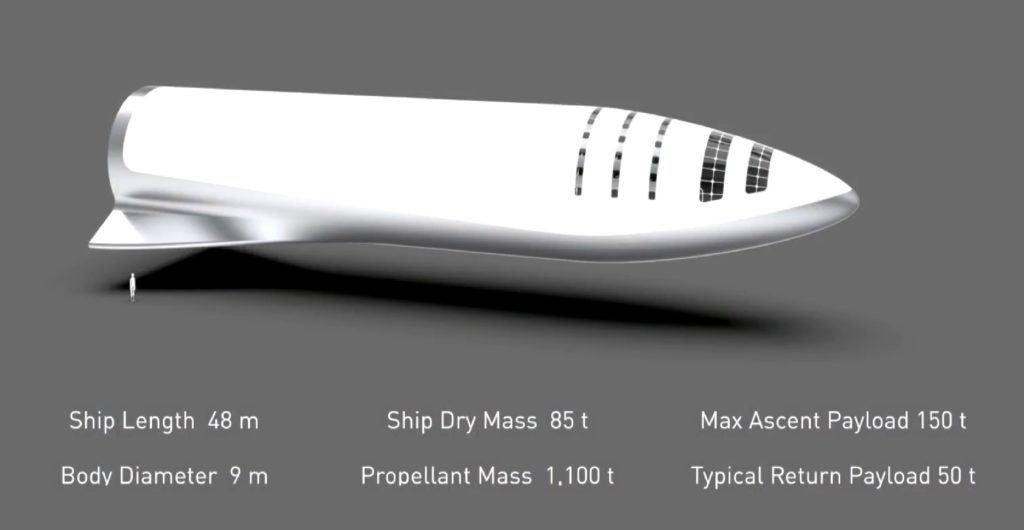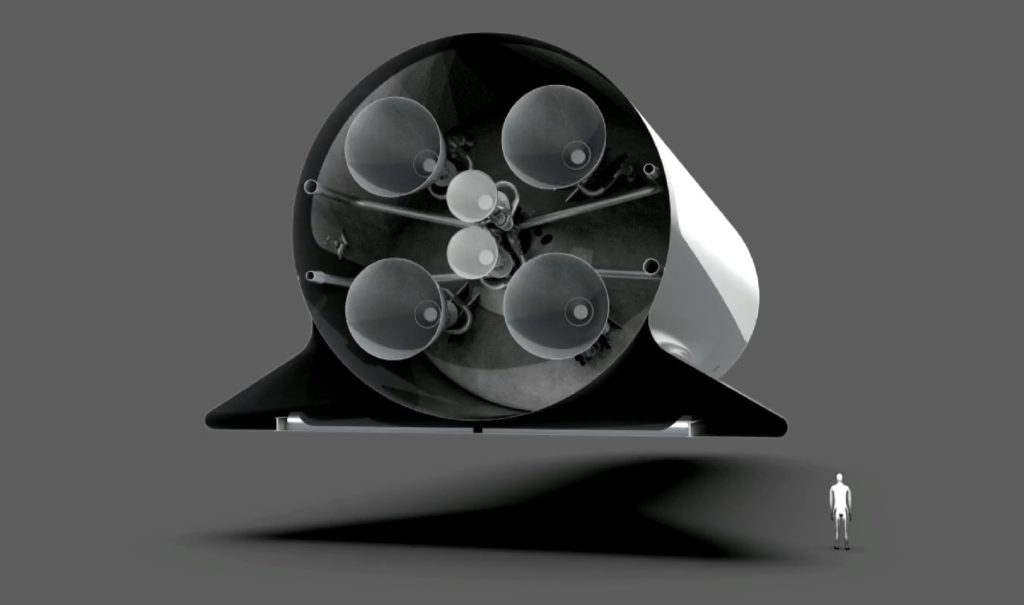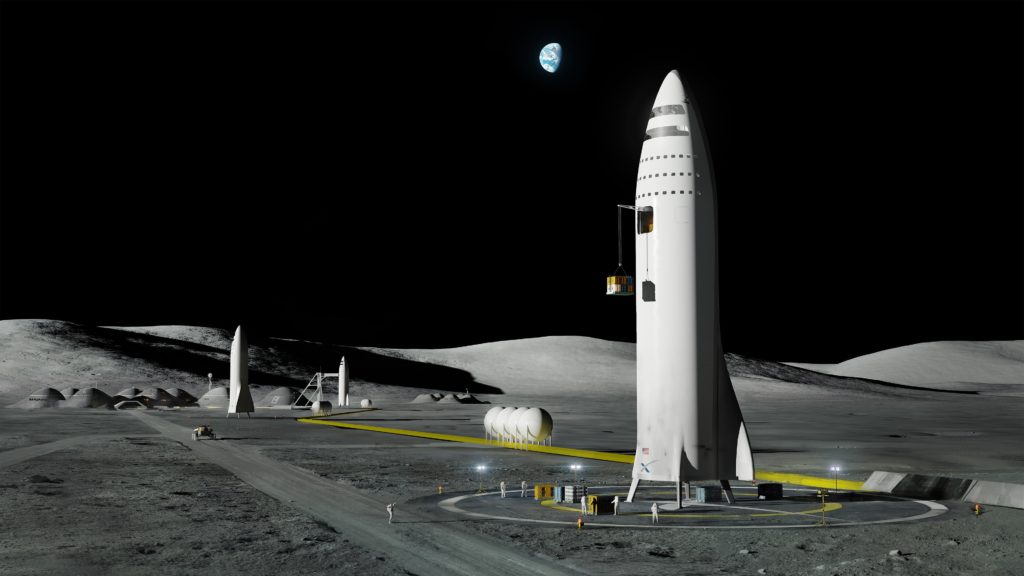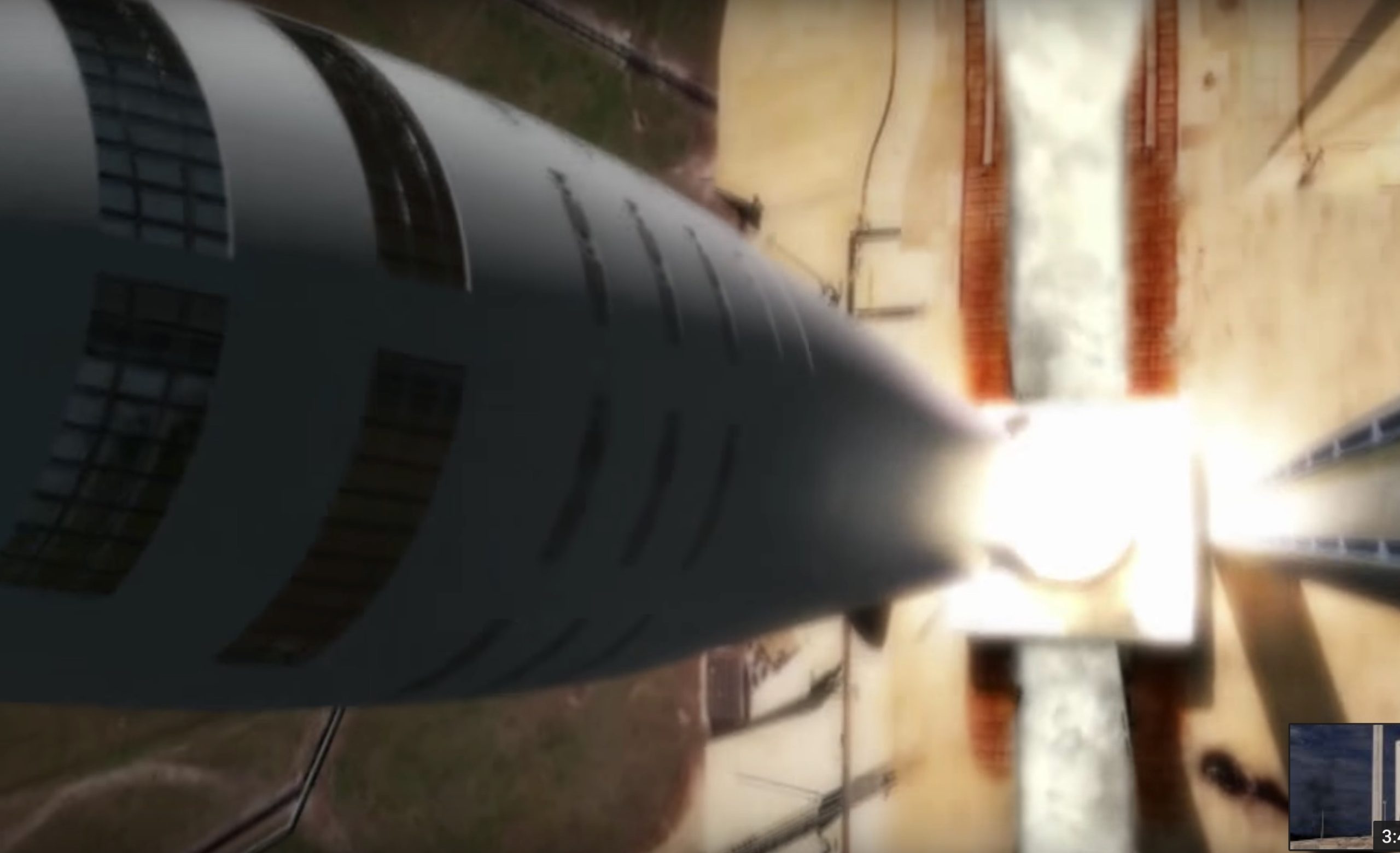
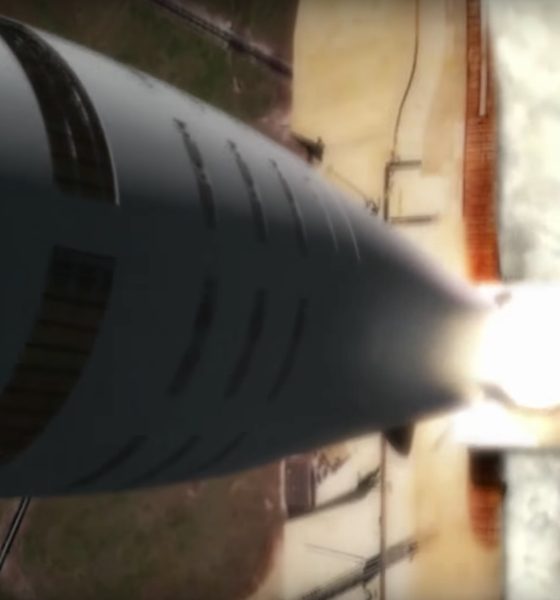
News
SpaceX will launch its Mars spaceship into orbit as early as 2020
First spaceship prototype already under construction
Speaking on a launch industry round-table at the Satellite 2018 conference, SpaceX President and COO Gwynne Shotwell revealed that the company intends to conduct the first orbital launches of BFR as early as 2020, with suborbital spaceship tests beginning in the first half of 2019.
Only six months after CEO Elon Musk first debuted the Interplanetary Transport System in Adelaide, Australia, a flood of recent comments from both executives have made it overwhelmingly clear that SpaceX intends to have its first spaceship ready for short suborbital test flights at the beginning of 2019. Considering Musk’s unprovoked acknowledgment at SXSW 2018 of his tendency towards overly optimistic timelines, the repeated affirmations of BFS test flights beginning in 2019 and now an orbital launch of the full BFR booster and ship in 2020 hold a fair deal more water than they did in 2017.

SpaceX’s subscale Raptor engine conducting a 40-second test in Texas. This engine will power both BFR and BFS. (SpaceX)
Breaking it down
These past few weeks have been filled with a number of similar statements from SpaceX executives like Shotwell, Musk, and others; all focused in part on the company’s next-generation launch vehicle, BFR (Big __ Rocket). Composed of a single massive booster and an equally massive second stage/spaceship (BFS), the rocket is meant to enable the affordable expansion of permanent human outposts on Mars and throughout the inner solar system by making good on the decades-old promise of fully reusable launch vehicles.
In order to succeed, the company will need to solve the problems that NASA and its Shuttle contractors never could.
- The relatively cylindrical BFS reduces complexity and lowers weight. (SpaceX)
- BFS (circa 2017) shows off its complement of SL and Vacuum Raptor engines. SpaceX is moving back to something similar to this. (SpaceX)
- SpaceX’s 2017 BFS (now Starship) delivers cargo to a large lunar base. (SpaceX)
To an extent, SpaceX has already matured the principles and technologies needed to reliably recover and reuse the booster stage of two-stage rockets, demonstrated by their incredible success with Falcon 9.
BFR is a whole different animal, partly owing to its massive size, huge thrust, and new propellant and tankage systems, but those problems are more technical than conceptual. SpaceX already knows how to reuse boosters, and that will apply to BFR once its several technological hurdles have been overcome. Designing and building the orbital spaceship (BFS), however, will undoubtedly be the most difficult task SpaceX has yet to take on. The safety and cost records of the only other orbital-class reusable second stage in existence, the Space Shuttle, are at least partially indicative of the difficulty of the challenges ahead of SpaceX.
In order to succeed, the company will need to solve the problems that NASA and its Shuttle contractors never could – they will need to build an orbital, crewed spaceship that can be reused with minimal refurbishment, can launch for little more than the cost of its propellant, and does so with safety and reliability comparable to the records of modern commercial airliners – perhaps the safest form of transport humans have ever created.

Space Shuttle Atlantis docked with the beginnings of the International Space Station. The Shuttle suffered several deadly failures and cost more than the expendable Saturn V moon rocket it replaced. (NASA)
Rockets do not easily lend themselves to such incredible standards of safety or reliability – airliners average a single death per 16 million flights – but SpaceX will need to reach similar levels of reusability and reliability if they hope to enable even moderately affordable spaceflight or Earth-to-Earth transport by rocket. Still, there can be little doubt that SpaceX employs some of the absolute best engineering expertise to have ever existed in the US, and their extraordinary personal investment in the company’s goal of making humanity multi-planetary bode about as well as could be asked for such an ambitious endeavor. According to Musk and Shotwell, the first spaceship is already being built and suborbital tests will begin as soon as 2019, while full-up orbital launches – presumably involving both the booster and spaceship – might occur just a single year later in 2020.
SpaceX's Shotwell: BFR will probably be orbital in 2020, but you should start seeing hops in 2019. (Grasshopper reference?) #satshow
— Caleb Henry (@ChenrySpace) March 12, 2018
Musk: People have told me that my timelines historically have been optimistic. I am trying to recalibrate. What I do know is we are building the first ship. We will be able to do do short flights in the first half of next year. It's a big booster and ship. Saturn V thrust x2.
— Michael Baylor (@MichaelBaylor_) March 11, 2018
It appears that we will find out sooner, rather than later, if SpaceX has truly found a way to lower the cost to orbit by several orders of magnitudes. Follow us for live updates, behind-the-scenes sneak peeks, and a sea of beautiful photos from our East and West coast photographers.
Teslarati – Instagram – Twitter
Tom Cross – Twitter
Pauline Acalin – Twitter
Eric Ralph – Twitter

Elon Musk
Elon Musk’s X will start using a Tesla-like software update strategy
The initiative seems designed to accelerate updates to the social media platform, while maintaining maximum transparency.

Elon Musk’s social media platform X will adopt a Tesla-esque approach to software updates for its algorithm.
The initiative seems designed to accelerate updates to the social media platform, while maintaining maximum transparency.
X’s updates to its updates
As per Musk in a post on X, the social media company will be making a new algorithm to determine what organic and advertising posts are recommended to users. These updates would then be repeated every four weeks.
“We will make the new 𝕏 algorithm, including all code used to determine what organic and advertising posts are recommended to users, open source in 7 days. This will be repeated every 4 weeks, with comprehensive developer notes, to help you understand what changed,” Musk wrote in his post.
The initiative somewhat mirrors Tesla’s over-the-air update model, where vehicle software is regularly refined and pushed to users with detailed release notes. This should allow users to better understand the details of X’s every update and foster a healthy feedback loop for the social media platform.
xAI and X
X, formerly Twitter, has been acquired by Elon Musk’s artificial intelligence startup, xAI last year. Since then, xAI has seen a rapid rise in valuation. Following the company’s the company’s upsized $20 billion Series E funding round, estimates now suggest that xAI is worth tens about $230 to $235 billion. That’s several times larger than Tesla when Elon Musk received his controversial 2018 CEO Performance Award.
As per xAI, the Series E funding round attracted a diverse group of investors, including Valor Equity Partners, Stepstone Group, Fidelity Management & Research Company, Qatar Investment Authority, MGX, and Baron Capital Group, among others. Strategic partners NVIDIA and Cisco Investments also continued support for building the world’s largest GPU clusters.
News
Tesla FSD Supervised wins MotorTrend’s Best Driver Assistance Award
The decision marks a notable reversal for the publication from prior years, with judges citing major real-world improvements that pushed Tesla’s latest FSD software ahead of every competing ADAS system.

Tesla’s Full Self-Driving (Supervised) system has been named the best driver-assistance technology on the market, earning top honors at the 2026 MotorTrend Best Tech Awards.
The decision marks a notable reversal for the publication from prior years, with judges citing major real-world improvements that pushed Tesla’s latest FSD software ahead of every competing ADAS system. And it wasn’t even close.
MotorTrend reverses course
MotorTrend awarded Tesla FSD (Supervised) its 2026 Best Tech Driver Assistance title after extensive testing of the latest v14 software. The publication acknowledged that it had previously criticized earlier versions of FSD for erratic behavior and near-miss incidents, ultimately favoring rivals such as GM’s Super Cruise in earlier evaluations.
According to MotorTrend, the newest iteration of FSD resolved many of those shortcomings. Testers said v14 showed far smoother behavior in complex urban scenarios, including unprotected left turns, traffic circles, emergency vehicles, and dense city streets. While the system still requires constant driver supervision, judges concluded that no other advanced driver-assistance system currently matches its breadth of capability.
Unlike rival systems that rely on combinations of cameras, radar, lidar, and mapped highways, Tesla’s FSD operates using a camera-only approach and is capable of driving on city streets, rural roads, and freeways. MotorTrend stated that pure utility, the ability to handle nearly all road types, ultimately separated FSD from competitors like Ford BlueCruise, GM Super Cruise, and BMW’s Highway Assistant.
High cost and high capability
MotorTrend also addressed FSD’s pricing, which remains significantly higher than rival systems. Tesla currently charges $8,000 for a one-time purchase or $99 per month for a subscription, compared with far lower upfront and subscription costs from other automakers. The publication noted that the premium is justified given FSD’s unmatched scope and continuous software evolution.
Safety remained a central focus of the evaluation. While testers reported collision-free operation over thousands of miles, they noted ongoing concerns around FSD’s configurable driving modes, including options that allow aggressive driving and speeds beyond posted limits. MotorTrend emphasized that, like all Level 2 systems, FSD still depends on a fully attentive human driver at all times.
Despite those caveats, the publication concluded that Tesla’s rapid software progress fundamentally reshaped the competitive landscape. For drivers seeking the most capable hands-on driver-assistance system available today, MotorTrend concluded Tesla FSD (Supervised) now stands alone at the top.
News
Elon Musk’s Grokipedia surges to 5.6M articles, almost 79% of English Wikipedia
The explosive growth marks a major milestone for the AI-powered online encyclopedia, which was launched by Elon Musk’s xAI just months ago.

Elon Musk’s Grokipedia has grown to an impressive 5,615,201 articles as of today, closing in on 79% of the English Wikipedia’s current total of 7,119,376 articles.
The explosive growth marks a major milestone for the AI-powered online encyclopedia, which was launched by Elon Musk’s xAI just months ago. Needless to say, it would only be a matter of time before Grokipedia exceeds English Wikipedia in sheer volume.
Grokipedia’s rapid growth
xAI’s vision for Grokipedia emphasizes neutrality, while Grok’s reasoning capabilities allow for fast drafting and fact-checking. When Elon Musk announced the initiative in late September 2025, he noted that Grokipedia would be an improvement to Wikipedia because it would be designed to avoid bias.
At the time, Musk noted that Grokipedia “is a necessary step towards the xAI goal of understanding the Universe.”
Grokipedia was launched in late October, and while xAI was careful to list it only as Version 0.1 at the time, the online encyclopedia immediately earned praise. Wikipedia co-founder Larry Sanger highlighted the project’s innovative approach, noting how it leverages AI to fill knowledge gaps and enable rapid updates. Netizens also observed how Grokipedia tends to present articles in a more objective manner compared to Wikipedia, which is edited by humans.
Elon Musk’s ambitious plans
With 5,615,201 total articles, Grokipedia has now grown to almost 79% of English Wikipedia’s article base. This is incredibly quick, though Grokipedia remains text-only for now. xAI, for its part, has now updated the online encyclopedia’s iteration to v0.2.
Elon Musk has shared bold ideas for Grokipedia, including sending a record of the entire knowledge base to space as part of xAI’s mission to preserve and expand human understanding. At some point, Musk stated that Grokipedia will be renamed to Encyclopedia Galactica, and it will be sent to the cosmos.
“When Grokipedia is good enough (long way to go), we will change the name to Encyclopedia Galactica. It will be an open source distillation of all knowledge, including audio, images and video. Join xAI to help build the sci-fi version of the Library of Alexandria!” Musk wrote, adding in a later post that “Copies will be etched in stone and sent to the Moon, Mars and beyond. This time, it will not be lost.”
